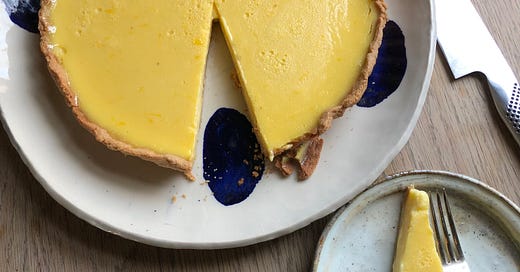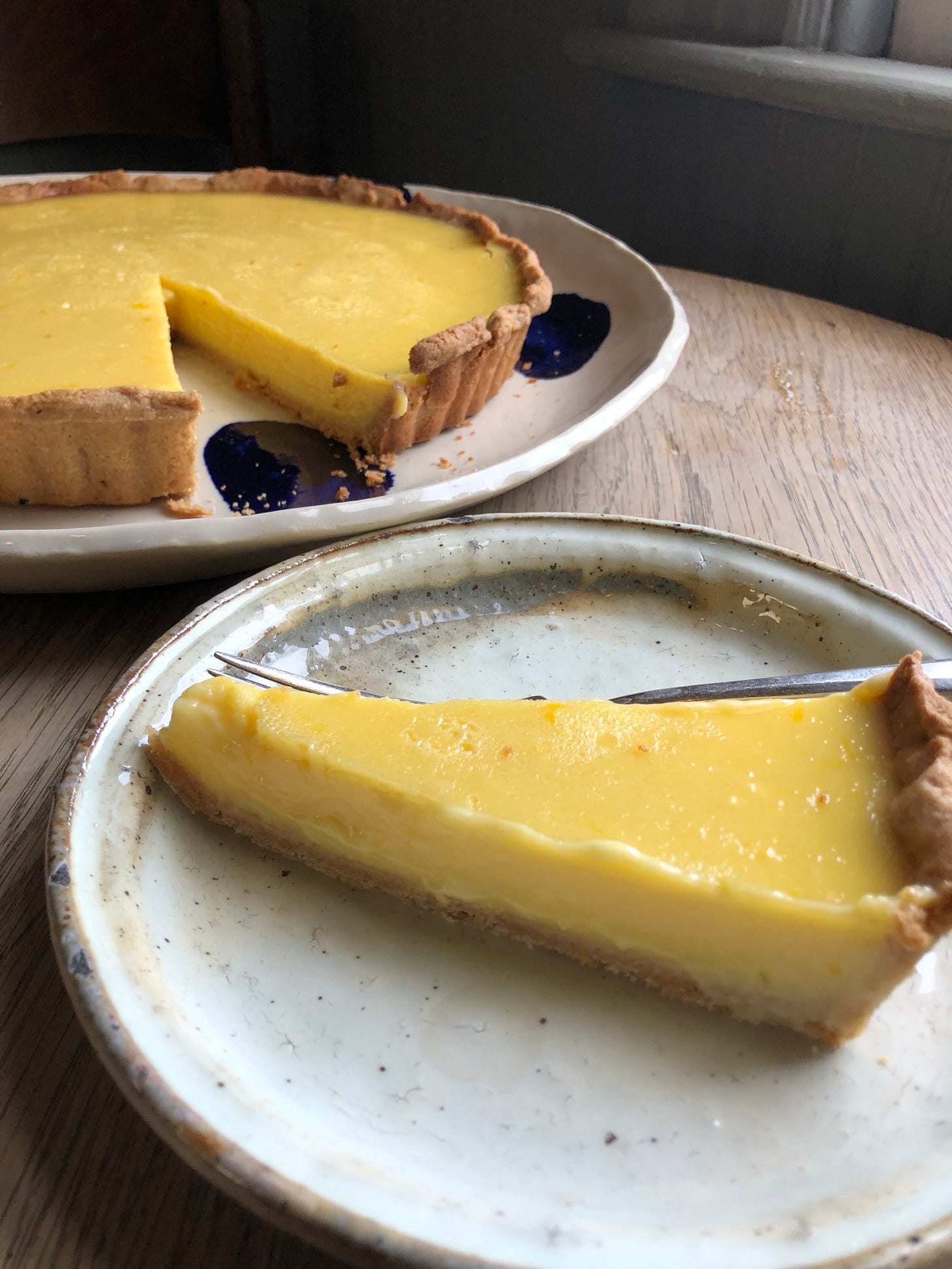It is the time of the year for Meyer lemons, the floral, thin-skinned and slightly sweeter variety that comes into season mid-winter. There is nothing quite like the smell of a Meyer lemon, it is heady and makes you want to make barrels of lemonade. My first job in a ‘real kitchen’ was to do just that- to zest and juice an entire case of Meyer lemons and turn them into a sugary syrup, ready to to be stirred through a glass of icy fizzy water. I remember feeling like I was in heaven, a seductive entrance into kitchen work life.
Because of their thin skin, Meyer lemons don’t ship very well, and so it is always a bit of a treat to enjoy them in Michigan. A special dessert that I don’t often make for my family at home feels like the perfect way to use the precious fruits. Lemon curd tart is perhaps my favourite of all lemony desserts- tangy custard barely set in a crisp, sweet pastry crust.
I have tried at least a dozen different recipes for lemon tart, some large, some tiny, some cooked in a bain Marie and piped into small shells, others cooked on the stove before pouring into the shell and putting under a broil (grill) to bubble and brown on top. Some with flaky, almost savory shells, some with soft cookie-like shells. But I always come back to this recipe. It is consistent and requires very little fussing around. The only real ‘trick’ is to not be in a hurry. Starting the recipe the day before you wish to serve it will allow enough time for the pastry to relax properly and the filling to settle in the fridge before baking.
I like to use some wholewheat flour in my tart shells- it adds some character that can be lacking in a shortcrust pastry. This pastry has no water, so it does not tend to shrink, though you still need to allow it time to rest. Always keep some of the extra dough for patching any holes or cracks that may appear.
It is important to cook the shell properly. A properly baked shell is often the difference between an average and an exceptional lemon tart- it needs to be deep golden brown, I frankly prefer it borderline overdone but that can feel risky, at least go for deep golden brown. This ensures that the crust will a) have developed a good, caramelized flavour and b) will hold up to having the wet filling poured in on top. If it is underdone, the base will be soggy and taste like a wet sock (only a slight exaggeration).
As for the filling, it is whisked up the night before and allowed to settle in the fridge before being poured into the cooked shell. The main thing here is to try your darnedest not to allow any filling to spill over the edge of the shell or you won’t end up with a clean outer shell. Admittedly, I am a bit clumsy and often end up with some filling on the outside of my tart…if the shell is properly baked, the texture will still be ok if this happens.
When mixing the filling ingredients, don’t allow the eggs to sit with the sugar without mixing or the sugar will start to ‘cook’ the yolks and you will end up with little lumps of egg yolk through the filling.
Keep reading with a 7-day free trial
Subscribe to Still Life With Lemon to keep reading this post and get 7 days of free access to the full post archives.





